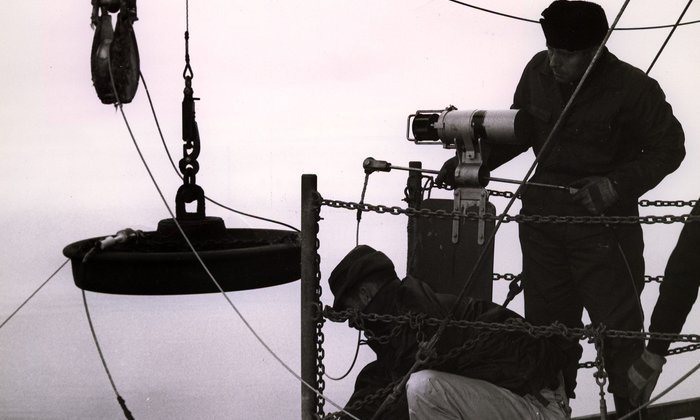Weddell Watch - Ocean Observatories
Long-term observations of the flow of dense waters from their area of formation to the abyss of the World Ocean, and the return flow of warm waters, are central to climate research.
For the Weddell Sea, an important component of such a system entail monitoring the formation of High Salinity Shelf Water (HSSW) on the continental shelf north of Ronne Ice Front, the transformation to Ice Shelf Water (ISW) beneath the floating Filchner-Ronne ice shelf (FRIS), and the flux of ISW overflowing the shelf break to the deep Weddell Sea. Equally important is the inflow of warm water toward the FRIS cavity.
This flow of warm water is predicted to increase during the coming decades. Tipping the continental shelf sea from a cold to a warm state and dramatical increase the basal melting of the FRIS. This ocean tipping point will in turn create an Antarctic ice sheet tipping point resulting in increased flow of inland ice into the ocean.
The NORCE contributions to Weddell Watch is observatories on the FRIS. These systems employ sensors to measure the current, temperature, salinity, and dissolved oxygen in the ocean water beneath the ice shelf. On the continental shelf edge, Filchner Sill, NORCE operate sub sea ice, bottom mounted moorings. These moorings are equipped with sensors for monitoring temperature, salinity, dissolved Oxygen, and ocean current. The first sub ice shelf system was established in 1999 and the systems on the Filchner Sill in 1977. Today these systems have delivered the longest existing ocean timeseries from Antarctica.
The systems on the FRIS are sending data in real time (once an hour). The systems on the Filchner Sill needs to be serviced by ship for data download and redeployment.
Ongoing projects related to Antarctica in NORCE
Today NORCE contributes to serval ongoing European Antarctic projects. The activity reported on here is supported by TiPACCs, SO-CHIC, OCEAN:ICE and SO-ICE, PolarRES, TONe and the NFR supported outreach project SØRIS.
Weddell Watch is an international cooperation between Alfred Wegner Institute, British Antarctic Survey, Sorbonne University and University of Bergen.

Story going long back
In 1960, Chr. Michelsens Inst. (CMI) and UiB was awarded the contract from the NATO Subcommittee on Oceanographic Research to develop a recording oceanographic currentmeter. The project co-ordinator was Dr. Dahl, the daily management of the project was handled by Ivar Aanderaa.
After the project's end in 1966, Ivar Aanderaa later founded Aanderaa Instruments A/S on the basis of the current meter.
In 1968, our scientists deployed the first instrumented moorings to obtain yearlong time series of oceanic current and properties (Foldvik et al., 2004), photo Thor Kvinge.
Dr. Odd Dahl was one of the first scientist at Chr. Michelsens Inst. involved in scientific exploration of the polar seas. Originally a naval aviator, he served as instrument expert and designer for one of the greatest pioneers within oceanography Prof. Dr. Harald Ulrik Sverdrup, the first member of CMI. Dr. Dahl met Sverdrup at Roald Amundsen's second 'Maud'expedition to the Arctic in 1919. In 1935, Dr. Dahl was also called to CMI department of Naturescience- later Christian Michelsen Research as from 2018 incorporated in NORCE.















